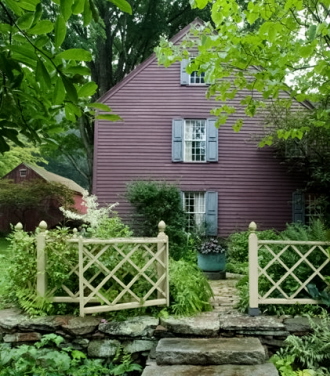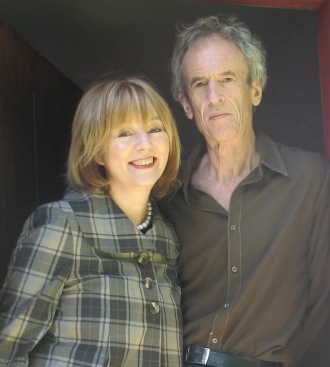
Anyone who has ever driven through Litchfield County and been mesmerized by its magnificent 18th- and 19th-century houses (which is to say, anyone who can see), can now satisfy the longing to snoop around inside some of the best of them. Litchfield Style, by the decorator Annie Kelly with photographs by her husband, Tim Street-Porter, who live part-time in Bantam, is a memoir of houses the couple has visited and loved. Some of the interiors Kelly features will satisfy the voyeur because they are everything those drive-bys promise. Others will fascinate and surprise because they are not at all what anyone other than their owners could have possibly imagined.

The first few houses featured are owned by people who are intent on keeping things authentic, such as George Schoellkopf, whose Hollister House (right) is but one of the properties featured whose gardens will be familiar to denizens of the Garden Conservancy Open Days tours. These homeowners take their interior cues from the exterior of the house. Reverential toward Litchfield's aesthetic legacy, they have put considerable resources and resourcefulness into choosing furnishings and finishes that are as historically authentic as 21st-century practicality will permit.

A new entry (left) seamlessly blends the original Hollister House with an 18th-century-barn addition, containing a new kitchen and living room, that Schoellkopf and his partner, the French artist Gerald Incandel, had moved to their property.

But as the book progresses, so does the sense of adventure. "I wanted to show what Litchfield County was in the past but also what it is today," Kelly says, whose own Bantam living room is featured on the book's cover. And one thing Litchfield is today is a magnet for aesthetes of irrepressible originality.

Robert Couturier, a French interior decorator, and his partner Jeffrey Morgan, an architectural historian, sketched a series of neo-classical garden pavillions one Sunday afternoon, then had them built. The results (above and left), while contemporary with Litchfield's 270-year-old architecture, owe more to English and French traditions than American.

Annie Kelly, an Australian, and Tim Street-Porter, who is British, met and married in Australia while Kelly was an art student and Street-Porter was there on a working vacation. "When people from different countries meet and marry, the question arises, which one shall we live in?," Kelly says. "Rather than his or mine, Tim and I chose the States." They settled in Los Angeles, where Kelly began to establish herself as an interior decorator even as Street-Porter, who had studied architecture, cemented his position at the top of the interior- and architectural-photography field.

The couple still live part-time L.A., in what is arguably the most beautiful historic house in town (left). But since much of their work is on the east coast, they had long felt the need for a base near New York City. "We both grew up in the country," Kelly says. More drawn to the country than the city itself ("I grew up on 3,000 acres," she explains), they began their inquiry into Connecticut in Greenwich and Westport, where their work often takes them. Since the towns on the sound felt more like L.A. than the country, they started driving north and west until they reached Litchfield County, where they—and their hearts—stopped. Annie Kelly will sign copies of Litchfield Style and answer readers' questions at Hickory Stick Bookshop, Washington Depot, CT, on Saturday, April 23, at 2 p.m. She will be joined there by fellow Litchfield designer-authors, Matthew Patrick Smyth and Florence de Dampierre.
Written by









